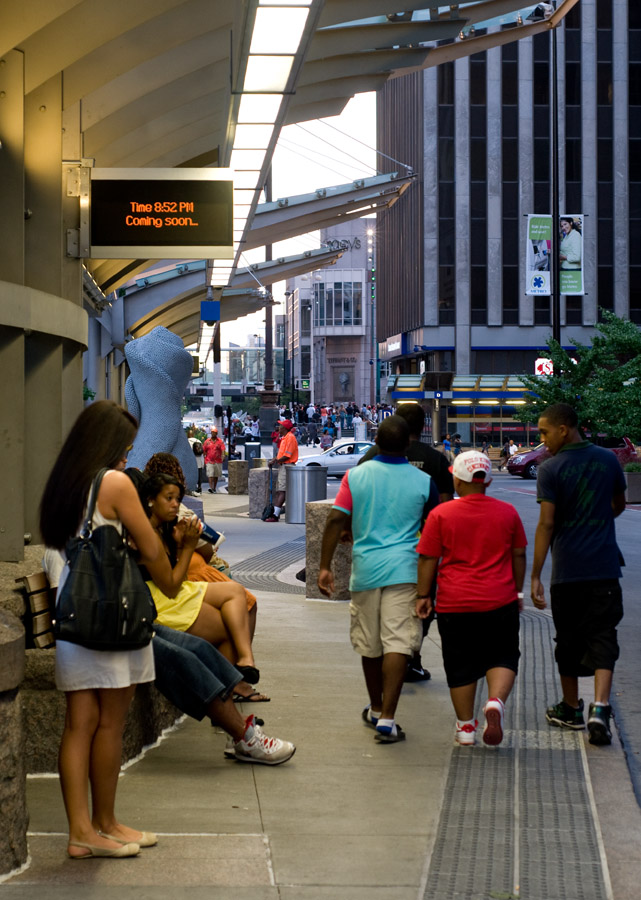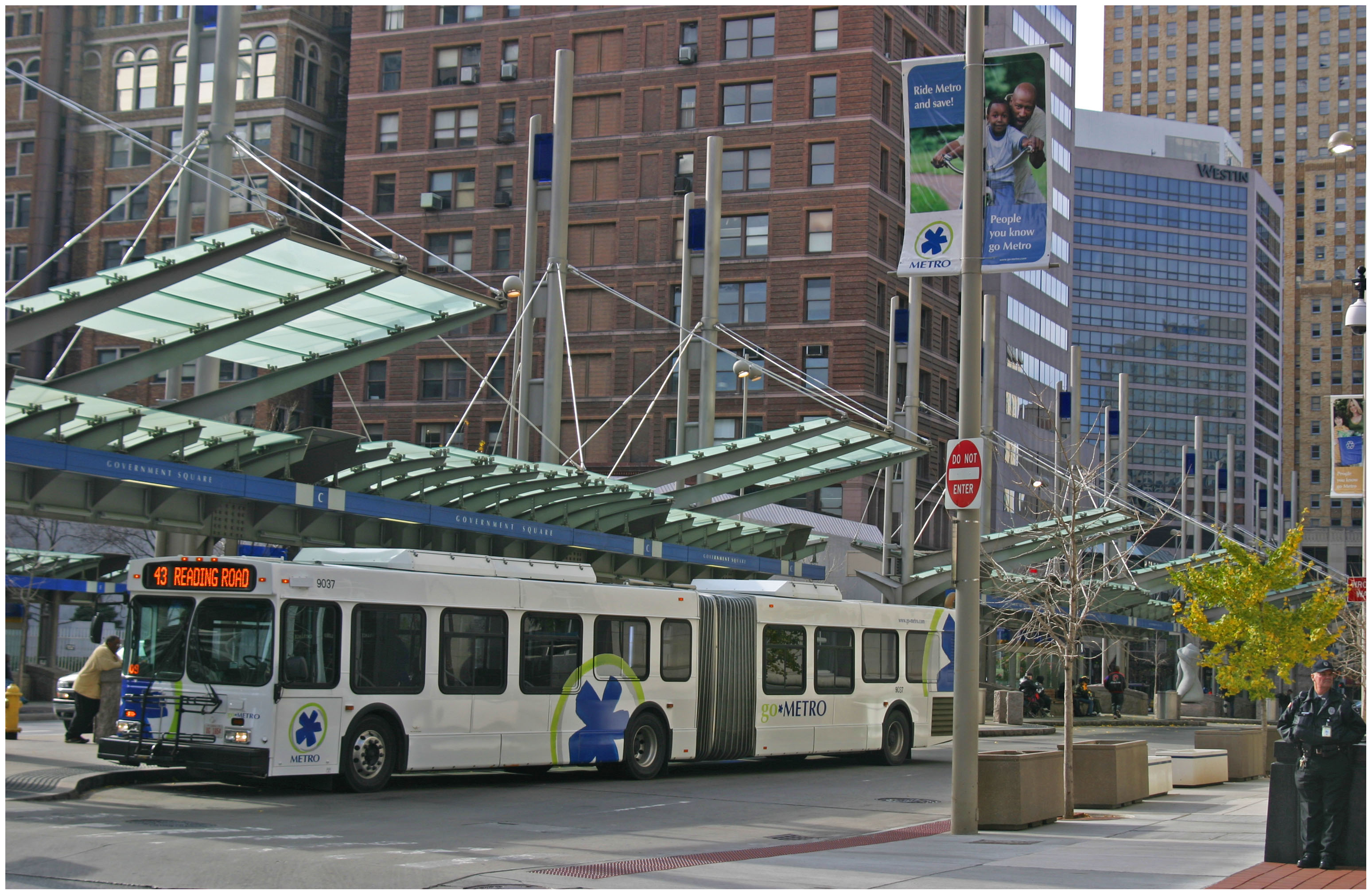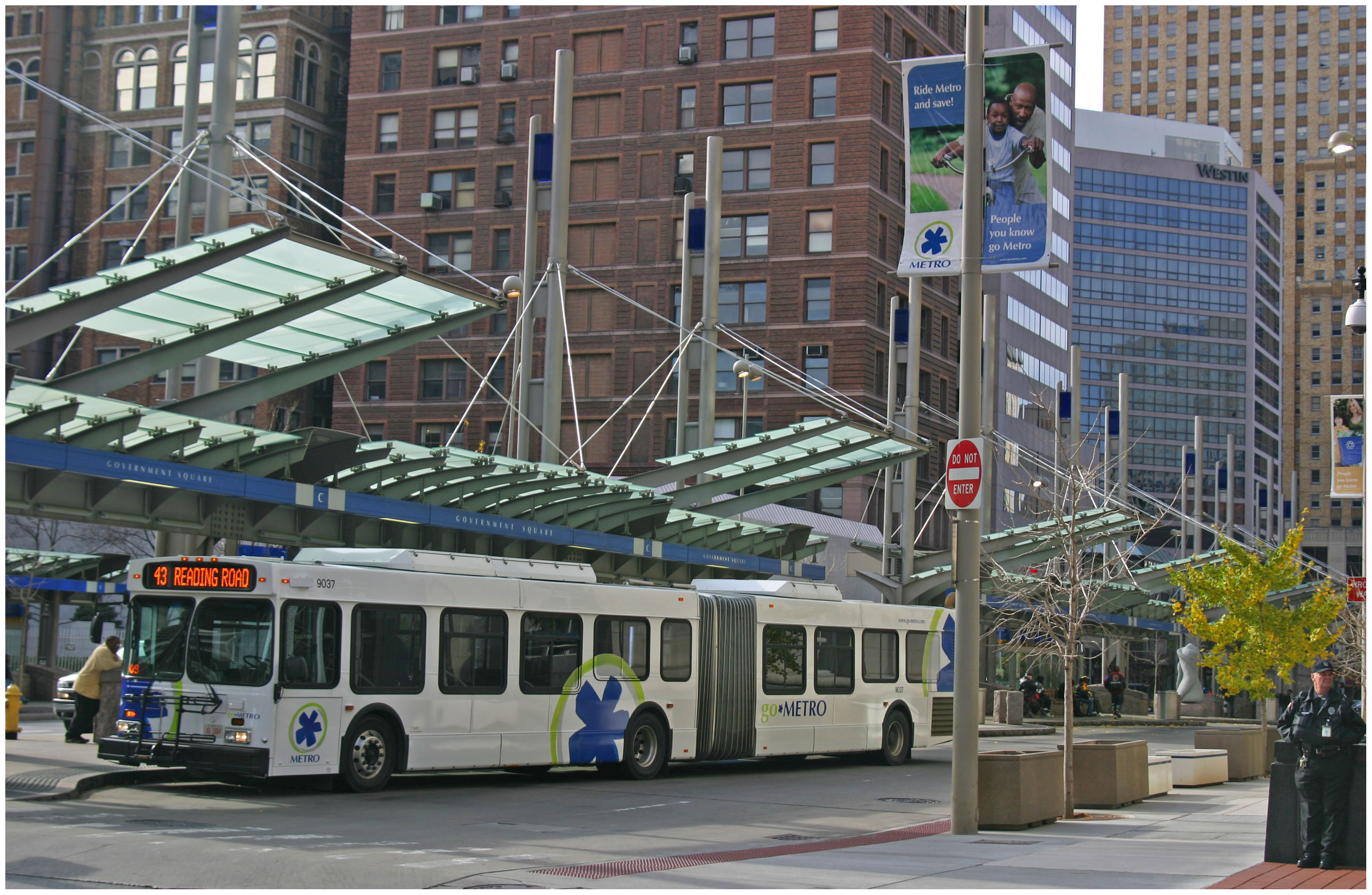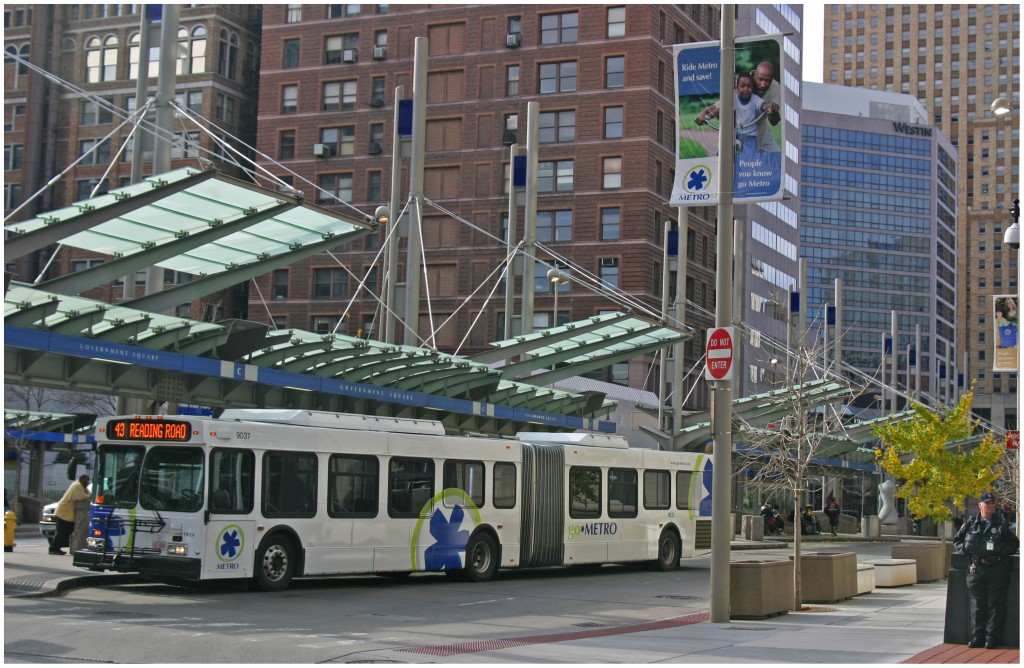Downtown Cincinnati Inc. (DCI) has released its eighth annual State of Downtown Report. The findings show continued improvements throughout the Central Business District, Over-the-Rhine and Pendleton neighborhoods.
“New, world-class office development, active retail leasing and expanded entertainment options demonstrate that downtown is thriving,” Gina Gartner, DCI’s Director of Stakeholder Services, stated in a prepared release. “In addition, the growing residential community, from The Banks to Over-the-Rhine, is actively engaged in making downtown a great place to live.”
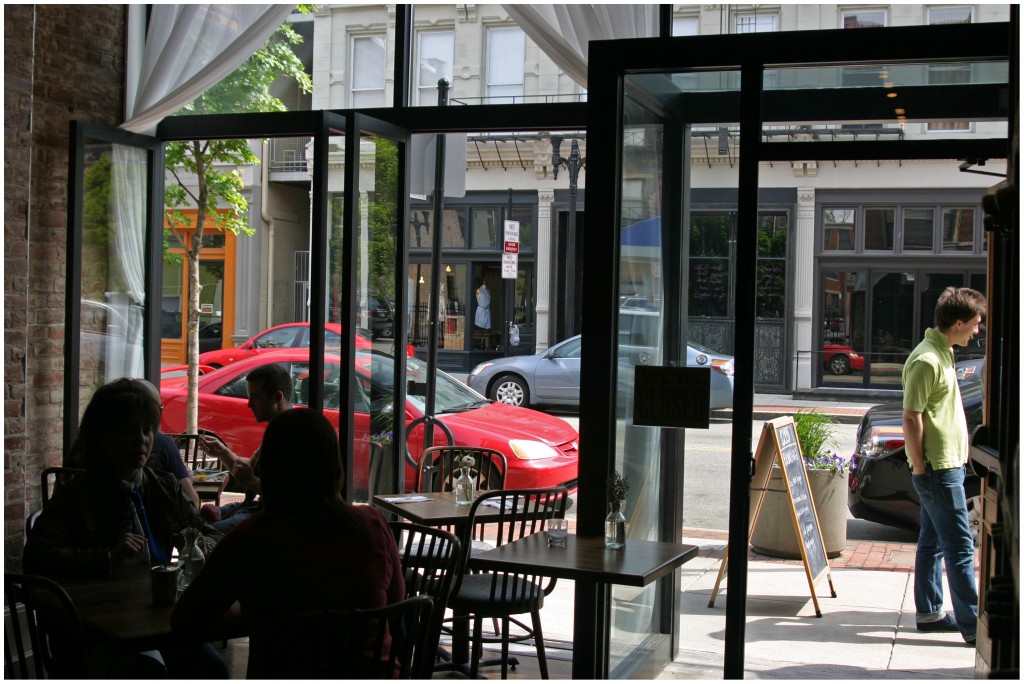 Customers enjoy the newly opened 1215 Wine Bar & Coffee Lab in historic Over-the-Rhine. Photograph by Randy A. Simes for UrbanCincy.
Customers enjoy the newly opened 1215 Wine Bar & Coffee Lab in historic Over-the-Rhine. Photograph by Randy A. Simes for UrbanCincy.
The 36-page report touts the continued population growth in the urban core, and points to more than $1.3 billion worth of development either currently under construction, or in planning stages. This, DCI officials claim, is evidence of a resurgent downtown area.
“Downtown continues to enjoy major growth and development within its neighborhoods, old and new, from Fountain Square to the East Eighth District and The Banks to Over-the-Rhine,” explained DCI President David Ginsburg. “With this growth, it becomes even more important to connect visitors, residents, employees, developers, and others to the wealth of options downtown has to offer once they are here.”
One way in which boosters envision connecting the growing number of people with the growing number of destinations downtown is through critical transportation investments like the $99.5 million first phase of the Cincinnati Streetcar and future enhanced bus service.
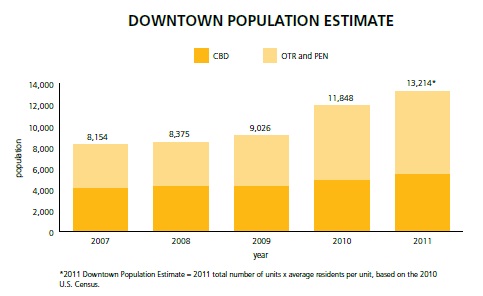 Downtown Cincinnati population growth chart provided by Downtown Cincinnati Inc.
Downtown Cincinnati population growth chart provided by Downtown Cincinnati Inc.
The report also highlighted 12 percent residential growth credited, in part, to the addition of 300 new apartments at The Banks which are 100 percent leased. The surge of new residents comes at the tail end of a period where the downtown area has added more than 5,000 new residents.
The residential growth at The Banks was complimented by ongoing population growth in historic Over-the-Rhine and throughout the Central Business District. And while the second phase of The Banks may not get underway for another six months, officials are excited about 88 additional apartments that will soon come online at The Reserve at 4th & Race.
“A 12% increase is significant and adds greatly to the vibrant city we work toward every day,” Ginsburg noted. “And, though it was not a surprise to DCI or its partners, the more than 25% drop in crime over the past ten years can be credited to the continued commitment of the Cincinnati Police, the City of Cincinnati’s Public Services Department, the Cincinnati Parks, Downtown Cincinnati Inc., and others.”
Perhaps tying the positive trends in residential growth and crime decreases with one another, are the brightly colored Downtown Ambassadors seen out on the streets every day, which have also recently begun servicing parts of Over-the-Rhine.
The report also found that 28 retail establishments opened in the downtown area in 2011, and that hotel occupancy rates surpassed the national and local average at 63 percent.
